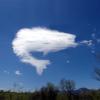Over the years I've had to concede that there just isn't a single lure out there I can reasonably expect to produce every time, or when I wish it to, at least with a satisfying catch rate. Catching fish consistently really comes down to understanding water/cover type and conditions in front of you, and then having the confidence with a variety of lures to cover those.
My "GoTo's" change seasonally, daily, even hourly. With catch rate being my focus I tend to go with the fastest lure I can get away with. This may mean a buzzbait, or swimming jig, a crankbait, a topwater, or worm, depending on conditions. I expect to change lures, finishes, and retrieves throughout the day.
For instance: I love to see bass blow up on topwaters. If conditions allow I like a buzzbait. But buzzbaits tend to require overcast and/or wind rippled water. Otherwise a buzzbait simply falls off my "go to" list. If the surface calms but I still have some clouds, or even haze, or the bass simply won't commit to the rhythmic cadence of a buzzer, I'll likely switch to a jumpbait. If things calm further and water is clear enough I may have to go to a popper (slower). Might be the same pod of fish, but as conditions change I change. There's not a "go-to" out there that will cover all the bases.
I suppose some lure types produce a greater catch rate over a variety of conditions than others, deemed versatile. But the exact version of that lure type even, will vary with the water or cover type I'm presented with, my experience and confidence, and often must be adjusted to the fish's reaction.
I do have lures I've done particularly well with, but my response tends to be then to move on to something else for good reason. I'm not a tournament angler which puts me in the position of being free to experiment every time out, in order to expand my versatility my options.
I'm also a small water angler, and I commonly find certain areas in a given water body that hold the majority of bass, and some waters are small enough the bass stay put. Such areas usually lend themselves to particular lure types: a jig, or a worm, a bulged spinnerbait, or a crankbait type, brings satisfying results. But I still may have to adjust size, finish, or retrieve, depending on conditions.
Interestingly, I've also gotten to know particular fish that responded to particular lures better than others. I remember a 28-30 inch pike (he grew over the three years I fished there) that was vulnerable to small dark colored crankbaits. Other lures might only elicit a follow or short strike. I knew a large bass in another pond that loved BIG crankbaits. I knew of a particular place where walleyes targeted concentrated shad under bridge lights. I found these walleyes could learn to discern lures. I'd catch three on a particular plug, then only get short strikes, then nothing. So I'd switch plugs, and start the series again. It got so I would start my fishing at that spot with a half dozen plugs layed out. And I'd go through em one at a time. Showed me that fish can discern seemingly subtle (to us) things about lures and retrieves, and their response can vary greatly to these seemingly subtle differences. I think rods and lines magnify what we do at the rod end, and if we are not concentrating, the lures may fail to trigger for us. Thus, confidence/concentration (knowing what to do with a particular lure in real time), results in bites.
This is one reason I think lure colors are so often ascribed to explain a good catch, when it was actually subtlety in the particular lures action, coupled with the retrieve that served as the more important trigger. There's lots one can do to add triggers to a retrieve, that far outweigh color in effect. I also believe that there are colors, or more accurately, finishes, that outperform others in certain conditions but one would never discern them if they didn't have the other parameters, depth, speed, action/triggers, understood and in control.
All this said, there are some basic lures that will catch a lot of bass, even the majority of the bass we catch. Even with the above mentioned walleyes, I did discover some lures, one in particular, those eyes had a darn hard time learning. And I believe I know why. It lies in the ease at which those subtle triggers can be elicited even when you're tired, or psyched out. Some lures have this built in more than others.
In most of my bass waters, I could get by with a plastic worm (or two), but some waters and conditions lend themselves to a dramatic catch increase by my switching to...a lipless crank, a swimming jig, a spinnerbait, or a weedless frog, or... But that's the macro scale. Most anglers know where to apply these.
At the micro-scale, at times when I've plied my tricks and I'm not catching, then rarely is it a lure change that turns the tide. That comes either from the conditions/fish side of the fence, or it's a locational, or a concentration/triggering deal. Lures just don't fish themselves much of the time.
SO...if you're still with me:
When I choose a lure, I look at water/cover type and particular conditions and pick a lure I already know how to operate my Go To for that particular place and time. And then I play with it until I elicit reactions. Then I just keep concentrating and adjusting until I've dialed in, or admit defeat, or the sun simply goes down on me.



